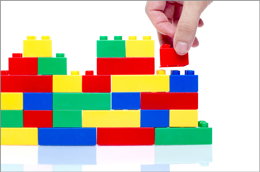06 July 2015

Imagine designing a structure in an industrial complex and being able to source building materials by accessing a database online to discover what components may be available to use from other buildings in the same area.
New research, led by UniSA’s School of Natural and Built Environments, indicates how tagging, and the ability to connect physical and virtual environments, could see the greater reuse and adaption of material components from older buildings into new constructions.
By attaching radio frequency identification tags (RFIDs) to building components, such as steel beams, information can be recorded as to the strength, size, type, and age of those beams, which can then be uploaded to a database.
An architect of a new building, designing a 3D CAD model, may then be able to source that relevant component for use in construction, by accessing that information online and finding a component that meets specifications. If that component is present in a building that is scheduled for renovation or demolition, and if fit for purpose, it could then be recycled for use in the new construction.
This cross-discipline research was demonstrated with the simple aid of a RFID tagged balsa wood model at the 2015 Unmaking Waste conference, and involved Dr David Ness, Dr John Swift, Mr John Gelder, Mr Adam Jenkins, Dr Nicholas Chileshe and Dr Ke Xing.
“The technique overcomes one of the major impediments to reuse of material, which is locating and warranting the performance of used structural components,” Dr Ness says.
“It allows greater reuse of building components such as steel beams. For example the steel beam could just be transferred from one location to the next without having to be scrapped and put back into a blast furnace, therefore potentially reducing waste, energy, greenhouse gas emissions and costs.
“The approach enables designers of new buildings to ascertain the availability and location of components and assemblies from structures at the end of their life, and remotely (via the internet) assess their properties such as strength, size, type, energy saving, cost and suitability.
“If the reuse option compares favourably with new procurement, used components can be incorporated in the designs of the new structures thus negating the need for recycling or new fabrication.”
Dr Ness adds that building owners can also use the technology to undertake an ongoing health check of their existing building assets over their life.
The initial investigation was funded by the Zero Waste SA Research Centre. With the support of an industry partner and an additional funding source, the next step will involve tagging and recording of an existing building to further demonstrate this innovation.
Contact for interview: Dr David Ness office (08) 830 21821
Media contact: Will Venn office (08) 8302 0096 email will.venn@unisa.edu.au




